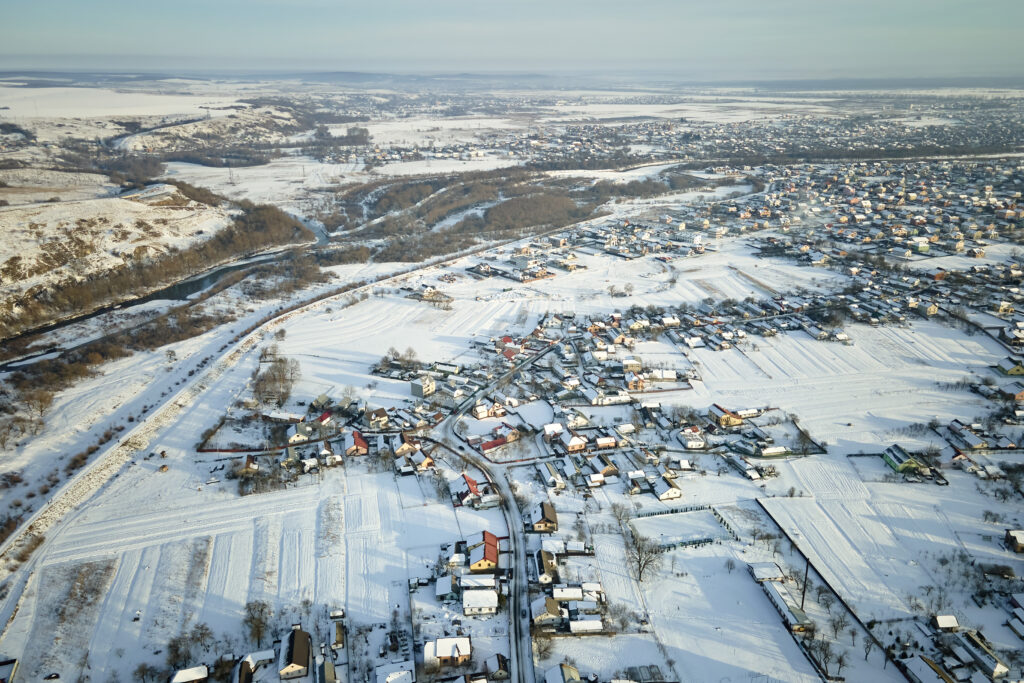Project Insights Report
Learning from One Another: A Comparative Analysis of Labour Market Needs and Corresponding Skills in Northern Ontario, Yukon, and Nunavut
 Executive Summary
Executive Summary
Labour markets in Northern Ontario, Yukon, and Nunavut are changing, but the pace and scale of that change are not well understood. This multi-year project provided a roadmap for governments, communities, and education and training providers to improve regional workforce readiness for existing and emerging opportunities.
The work included labour market analysis and economic forecasts for each region from 2024 to 2045, descriptions of in-demand skills, and key challenges and strategies for workforce and skills development. It also examined training challenges in Northern and remote contexts, showcased effective practices, and explored how gaps are being addressed.
Forecasts show employment is expected to grow by 5% in Northern Ontario, 10% in Yukon, and 18% in Nunavut. There will be high demand for post-secondary education and skills in health care, social services, education, and trades.
To address skills gaps, recommendations include expanding post-secondary pipelines for Northern students, increasing work-integrated learning in high schools, and investing in housing and infrastructure to attract skilled workers. Improving access to local education and training is critical to aligning labour supply with industry demand and reducing youth out-migration.
Flexible approaches to skills development are essential to deliver training in remote areas and to populations facing unique barriers. Increased investment is needed to support strategic planning, cover higher costs, develop infrastructure, and expand program offerings. Long-term funding can reduce administrative burdens on training organizations. Mobile and in-community training can support Indigenous workforce development. To promote success, training programs should include land-based learning and provide access to mental health supports, childcare, financial aid, and mentorship.
Understanding sectoral change and preparing for future demands is key to improving labour market readiness and supporting sustainable economic growth in Canada’s North.
Key Insights
In Northern Ontario, 55% of jobs in the top 50 occupations forecasted to be in demand require a post-secondary education compared with 63% of jobs in Yukon and 62% of jobs in Nunavut.
Creating post-secondary education pipelines for highly trained professions for Northern students can strengthen the pipeline of skilled labour in the North.
Shifting skills training funding from short-term, project-based models to long-term investments can support strategic planning, increase program offerings and progressive training, and reduce the administrative burden for organizations offering training.
 The Issue
The Issue
Labour market demands and employment opportunities in Northern Ontario, Yukon, and Nunavut are subject to unique considerations, geographies, and contexts. They are also subject to economic, social, technological and environmental change. Some of the traditional drivers of employment within these regions, such as the natural resource sector, are modernizing or slowing down. At the same time, new employment opportunities are emerging across a range of sectors. Skills are projected to be in demand for infrastructure development and construction, resource development and its increasing array of supply chain opportunities for small to medium sized enterprises, various forms of land-based and cultural tourism, public administration and Indigenous governance and land-claim/treaty implementation.
Inuit, Métis and First Nation people make up a significant proportion of the population in these regions. As substantial yet underrepresented groups in local and regional labour forces, their labour market issues and perspectives on sectoral change are especially relevant. Indigenous leaders and communities will be looking to align themselves with the demands of the market, and to identify meaningful, sustainable sources of employment. For their part, employers will be looking to these groups as significant sources of under-utilized local talent. That said, linking these populations to emerging opportunities means facing key challenges associated with remoteness and isolation, and ensuring access to effective skills development and training.
While there is acknowledgement that Northern labour markets are changing, the pace, scale and nature of this change are not well understood. Regional Indigenous groups as well as public and private sector stakeholders in Northern Ontario, Yukon, and Nunavut have demonstrated an ability to adapt their practices, programs and policies to seize opportunities and address skills shortages. Yet persistent gaps between locally available talent and the needs of employers remain. These gaps are often filled with costly fly-in fly-out labour from other regions of the country. And wages earned by FIFO labour are typically spent in southern towns and cities – perpetuating a cycle of economic leakage.
Employers, governments, communities and education and training institutions are all looking to improve the “readiness” of regional workforces for the opportunities that lie ahead. Aligning supply and demand will be critical to seizing these opportunities and to economic development. For Indigenous groups and communities, skills and capacity development will not only be important to improving employment; it will also support self-determination and economic reconciliation.
Ultimately, understanding sectoral change and how to meet future demands and opportunities should position these regions as leaders in fostering skills development within Northern and remote contexts.

 What We Investigated
What We Investigated
A comprehensive understanding of where labour markets will be trending in the years ahead and the challenges to workforce and skill development in Northern Ontario, Yukon and Nunavut is needed to inform decision-makers on how to align skills development in a way that is responsive to existing and emerging industries.
Accordingly, this project included the following:
- A comprehensive, in-depth labour market needs assessment for the regions of interest. This includes an environmental scan and literature review to improve our understanding of what is driving labour market shifts and what are the challenges to recruiting and retaining labour in these Northern regions.
- Economic forecasts for each region to project the demand for labour by industry and what occupations will be in demand between 2024 and 2045.
- Consultations, interviews and focus groups with Northern Indigenous leaders, employment and training service providers, community leaders, employers, and government representatives to
- identify skills gaps;
- identify challenges and strategies to strengthen the pipeline of skilled labour from within these regions;
- identify priorities for developing more effective and responsive skills development ecosystems across Northern Ontario, Yukon, and Nunavut.
- A mapping initiative to identify skills gaps and determine the alignment of future labour market needs with existing skills within the regions of interest.
- A comparative analysis of leading skills development programs and practices in the regions in question to determine their effectiveness in ensuring workforces will be ready to meet future labour market demands and the associated employment opportunities.
Research Questions:
- How are labour markets changing in Yukon, Northern Ontario and Nunavut? What will this mean for occupational demand in the coming years?
- How prepared are the populations of these regions to adapt to labour market changes and to seize new and future employment opportunities and what skills gaps will exist?
- What are some of the challenges to addressing labour shortages and skills gaps?
- What can governments, including Indigenous governments, employers, and education and training institutions do to help residents from these regions adapt to shifting labour market demands and seize employment opportunities?
- What best practices exist and/or where are there gaps that need to be addressed to align skills development initiatives with the needs of employers?
 What We’re Learning
What We’re Learning
This project involved an in-depth assessment of labour markets in Northern Ontario, Yukon, and Nunavut with the goal of providing a road map for governments, communities, employers, and education and skill training providers to improve the readiness of regional workforces to take on emerging opportunities.
The project focused on understanding labour market conditions; identifying employment growth and in-demand skills; identifying strategies to close skills gaps; and building a stronger Northern skills development landscape.
Understanding labour market conditions
A labour market analysis was conducted for each region to understand the current labour market and the challenges for recruiting and retaining labour.
Key findings include:
- These three regions have some of the largest job vacancy rates in Canada.
- There are significant disparities in education and employment between Indigenous and non-Indigenous populations in each of these regions. Barriers to employment for Indigenous people include lower education levels, limited access to culturally relevant and local training, discrimination, and health disparities.
- Many sectors in these Northern regions-especially mining and construction- rely on fly-in fly-out labour to meet the demand. This means that income earned often leaves the local economy.
- The lack of available and affordable housing in all three regions makes it difficult to attract skilled workers.
- Immigration to Northern Ontario and Yukon has played an important role in sustaining labour markets amid aging populations, declining birth rates, and out-migration.
- Access to affordable and suitable housing, improved processes for credential recognition, more education on the culture and landscape of living in the North pre-admission, and better access to settlement services for immigrants settling in rural communities are needed to improve the retention of immigrant to these regions.
- The limited access to local post-secondary education drives the out-migration of youth who leave the region for post-secondary education and do not return.
Identifying employment growth and in-demand skills
Economic forecasts using The Conference Board of Canada’s Provincial and Territorial Forecasting Models project the demand for labour by industry and what occupations will be in demand between 2024 and 2045.
Key findings of the forecasts include:
- Employment is expected to grow by 5% in Northern Ontario, 10% in Yukon, and 18% in Nunavut between 2024 and 2045.
- In Northern Ontario, the sectors driving employment growth are non-commercial services, which is expected to increase by 22%, manufacturing by 23%, and commercial services by 2%.
- In Yukon, the sectors driving employment growth are non-commercial services, which is expected to increase by 14%, commercial services by 11%, and public administration and defence by 9%.
- In Nunavut, the sectors driving employment growth are public administration and defence, which is expected to increase by 30%, non-commercial services by 18%, and wholesale and retail trade by 24%.
- The demand for skills that require post-secondary education will be high across the regions. Fifty-five per cent of jobs in the top 50 occupations In Northern Ontario, 63% in Yukon and 62% in Nunavut require a post-secondary education.
- Skills in health care, social services, education, and trades will be in high demand.
Closing skills gaps
Consultations with governments, community leaders, employers and industry representatives revealed challenges and strategies for strengthening the pipeline of skilled labour from within these regions.
Key recommendations include:
- Tracking regional labour market demands to support strategic planning by education and skills training providers to offer programs in demand.
- Expanding post-secondary education pipelines for highly trained professions for Northern students.
- Increasing work-integrated learning in high schools to expose Northern students to local careers.
- Investing in housing and infrastructure to support employers efforts to attract skilled labour to these regions.
Building a stronger skills development landscape
Education and skills training organizations identified challenges to training in a Northern context, effective strategies, and how gaps are being addressed.
Key recommendations for supporting the delivery of effective skills training in a Northern context that is responsive to employment demands include:
- Shifting funding for skills training from short-term project-based funding to long-term funding to support strategic planning, expand program offerings and progressive training, and reduce the administrative burden for organizations offering training.
- Embedding support services for trainees into skills training programs and adapting training to be culturally relevant can support success for Indigenous learners. This includes building land-based learning into curricula and providing access to mental health supports, childcare, financial support, and mentorship to support career progression.
- Developing mobile and community-based training programs for remote communities.
- Establishing regional networks to strengthen collaboration between organizations offering training to reduce the duplication of services and pool resources to expand program offerings.
 Why It Matters
Why It Matters
This project provides a comprehensive understanding of where labour markets in Northern Ontario, Yukon, and Nunavut will be trending in the years ahead and of the challenges and strategies for workforce and skills development. The findings of this work can inform policy development and guide funding decisions to ensure skills development aligns with both current and emerging industry needs.
Northern Ontario, Yukon and Nunavut have some of the most acute labour shortages in Canada. In response, many industries in these regions rely on fly-in fly-out labour to fill the demand which impacts the regional economy as the money earned in the region is not spent in the local economy. Equipping local workers with the skills in demand in the regional economy will be critical to seizing opportunities and supporting economic development in the North.
The economic forecasts for each region project the demand for employment by sector and what type of skills will be in demand between 2024 and 2045 in each regional economy. Governments can use these results to offer funding for training for in-demand programs and reform immigration programs to attract foreign workers with in-demand skills. Education and skills training providers can use the results of our forecasts for strategic planning to inform their program offerings to ensure that regional training is available for Northern residents.

State of Skills:
Evaluation and Learning in the Skills and Training Ecosystem
The Future Skills Centre’s approach to evaluation and learning has evolved over time, reflecting the challenges of measuring social impact. It has shifted from a focus on common outcomes to a broader approach that embraces multiple methods for understanding impacts on individuals, institutions and systems.
Several strategies were identified to address skills gaps and labour shortages in these regions. Governments can help support employers attract skilled labour to these regions by investing in housing and infrastructure. While immigration helps address labour market demand, streamlined processes and shorter timeframes for recognizing international credentials are needed to enable these workers to fully utilize their skills. In addition, employers and the education system can work together to expand work-integrated learning in high schools to promote Northern careers for local residents. And more investments are needed in local education and skills development training to reduce out-migration of Northern residents to Southern Canada for post-secondary education.
Increasing the availability of local training requires greater funding for Northern education and skills training organizations to address the challenges these organizations face in offering training in remote contexts and for populations that may face complex and unique barriers to training. The cost of training in these remote locations is greater than the South due to limited infrastructure and training professionals and smaller populations. Governments need to recognize these increased costs and adjust funding models to cover adequate resources for training. In addition, shifting skills training funding from short-term, project-based models to long-term investments can support strategic planning, increase program offerings and progressive training, and reduce the administrative burden for organizations offering training.
To support workforce development for Indigenous populations living in these regions where disparities in education and employment exist, there is a need to invest in mobile and in-community training that meets the needs of the communities. To support success, there is also a need for training organizations to integrate support services into skills training programs and make training culturally relevant. This includes building land-based learning into curricula and providing access to mental health supports, childcare, financial support, and mentorship to support career progression.
Ultimately, this work provides a road map to improve the readiness of regional workforces for future demands and opportunities. In order to improve the effectiveness and responsiveness of training in the North, funding should include money for strategic planning and tracking labour market demands, logistic supports, learner supports, training infrastructure, and relationship building.
FSC Insights
Learning from One Another: Labour Markets in Northern Ontario
Learning from One Another: Labour Markets in Yukon
Learning from One Another: Labour Markets in Nunavut
Learning from One Another: Skills Gaps in Labour Markets in Northern Ontario, Yukon, and Nunavut
Learning from One Another: Building a Stronger Skills Development Landscape in Nunavut, Northern Ontario, and Yukon
Learning from One Another: Economic and Labour Forecast for Northern Ontario, Yukon, and Nunavut
More from FSC
Understanding the Nature and Experience of Gig Work in Canada
Survey on Employment and Skills
Planning When You Can’t Predict: Strategic Foresight and the Future of Work
Have questions about our work? Do you need access to a report in English or French? Please contact communications@fsc-ccf.ca.
How to Cite This Report
Project Insights Report: Learning from One Another: A Comparative Analysis of Labour Market Needs and Corresponding Skills in Northern Ontario, Yukon, and Nunavut. The Conference Board of Canada. Toronto: Future Skills Centre. https://fsc-ccf.ca/research/learning-from-one-another-pir/
Learning from One Another: A Comparative Analysis of Labour Market Needs and Corresponding Skills in Northern Ontario, Yukon, and Nunavut is funded by the Government of Canada’s Future Skills Program. The opinions and interpretations in this publication are those of the author and do not necessarily reflect those of the Government of Canada.




